Projects
School Amateur Radio Clubs have inspired a number of very interesting radio and electronic projects. We are developing more all the time. We include them here so that you can be inspired too! Unless otherwise indicated, everything is free for non-commercial use and our software is released under the GNU General Public Licence. So you can pretty much do what you want with it, provided you just keep the copyright statement and reference to this website. For those wishing to learn more about Arduino programming please see our Arduino For Amateur Radio Workshop. An excellent eBook on the subject, which can also be used to guide year 5 or 6 students, is Getting Started with Arduino. Good luck with your project and keep in touch with your own questions, project ideas, news and pictures. Here is a list of all the SARC projects on this website:
Project List
- MTG004 High Altitude Balloon
- SARC1 High Altitude Balloon
- Universal HF Beacon/Tracker with F4GOH
- Speech Synthesizer for the Yaesu FT-817
- Mini Satellite-Antenna Rotator Mk 1 - Arduino Light Duty
- Mini Satellite-Antenna Rotator Mk 2 - Arduino Medium Duty
- SARCTRAC Mk1 - Light Duty Satellite Antenna Rotator Controller and TRACker
- SARCTRAC Mk2 - Light Duty Satellite Antenna Rotator Controller and TRACker
- SARCTRAC Mk3 - Light Duty Satellite Antenna Rotator Controller and TRACker
- SARCTRAC Mk4 - Heavy Duty Satellite Antenna Rotator Controller and TRACker
- SDR Modulation Monitor
- SDR Receiver
- SDR Transceiver
- SDR AIS Receiver
- Portable Radio Terminal
- Amateur Radio Direction Finding Telemetry Unit
- Automatic Packet Reporting System on HF
- Remote Radio Control Server
- Robotics Platform SARCBOT 1
- Robotics Platform SARCBOT 2
- USB Rig Interface
- Enigma Project
- Loop Antenna
- Inverted V Antenna
- QSO Map
- CTCSS Encoder
- HF Propagation
- GPS Time Sync
- Feed Lines and Baluns
- Home Automation System
MTG004 High Altitude Balloon
This project was our first Global Space Balloon Challenge payload. It transmits alternating JT9/JT65 telemetry on 30m SSB. It was launched on 19 April 2015. Please note that under section 115 of the Australian Environment Protection Act 2017, it is now illegal to launch balloons into the environment, even for scientific and educational reasons, without approval.
For more details please see our Project Page, Amateur Radio magazine article and GippsTech technical presentation:

SARC1 High Altitude Balloon
This project is our second Global Space Balloon Challenge payload. It transmits BPSK31 telemetry on 434.650MHz FM. It was launched as part of the 2016 ANZAC Day Amateur Radio Special Event. Both SARC students and Melbourne region Scouts participated in the launch and then tracked the payload on their mobile devices. Please note that under section 115 of the Australian Environment Protection Act 2017, it is now illegal to launch balloons into the environment, even for scientific and educational reasons, without approval.
For more details please see our Project Page, GippsTech Presentation and Payload Configuration

Universal HF Tracker Project with F4GOH
This project is in collaboration with our very good friend Anthony Le Cren F4GOH in France. Anthony has kindly produced an excellent PCB of our Arduino tracker with several of his own improvements. Everything needed is on the PCB including MOSFET switches to control the GPS and DDS and a powerful dual BS170 RF amplifier and Low Pass Filter. It uses our original AD9833 DDS library for operation up to 12.5MHz. We intend to use this evolution of our design for many different School Amateur Radio Club projects including a WSPR beacon, JT9/65 HAB payload and even an Ocean Current Tracker! Please note that under section 115 of the Australian Environment Protection Act 2017, it is now illegal to launch balloons into the environment, even for scientific and educational reasons, without approval. Anthony also has a very good Ham Projects blog with may other great projects. Thank you Anthony!
For more details please see our HF Tracker Project Page and Schematic Diagram:
Speech Synthesizer for the Yaesu FT-817
This project enables the whole SARC class to hear the frequency, mode and signal strength of our Yaesu FT-817 transceiver. The project was nicknamed "Rachel" after the synthetic British female voice we used for text-to-speech conversion. It could also be useful for operators with impaired vision.
For more details please see our Rachel Project Page, GippsTech Presentation, Amateur Radio magazine article and source code:

Mini Satellite-Antenna Rotator Mk 1 - Arduino Light Duty
This project lets SARC students to track Amateur Radio satellites using our solar-powered, portable, amateur satellite-antenna rotator.
For more details please see our Mini Satellite-Antenna Rotator Mk1 Project Page, Amateur Radio magazine article, source code and GippsTech Presentation:

Mini Satellite-Antenna Rotator Mk 2 - Arduino Medium Duty
This project is a mechanical re-design of the original Mini Satellite-Antenna Rotator Mk1 using the same electronics and software for a medium-duty rotator capable of rotating two, 3m long, cross-polarised Yagis. There is a MK2a version using sprockets and roller-chain and a Mk2b version using pulleys and timing-belt.
For more details please see our Mini Satellite-Antenna Rotator Mk2 Project Page, Amateur Radio magazine article, source code and GippsTech Presentation:
- Mini Satellite-Antenna Rotator Mk2 Project Page - Sprockets and roller-chain
- Mini Satellite-Antenna Rotator Mk2 Project Page - Pulleys and timing-belt
- Mini Satellite-Antenna Rotator Mk2 Amateur Radio magazine article

SARCTRAC Mk1 - Light Duty Satellite Antenna Rotator Controller and TRACker
SARCTRAC Mk1 was a portable, integrated, satellite tracking system, which was available only as a kit. It used a Raspberry Pi Zero W. It had its own WiFi web server and was controlled by a mobile device browser.
SARCTRAC was developed so that students at our School Amateur Radio Clubs can have fun and learn about Low Earth Orbiting satellites during our lunchtime sessions. It takes minutes to set up, in the playground, on a mountain summit, down at our local footy oval or even in the backyard. It starts tracking visible satellites from the selected satellite list right away. Tracking satellites is a bit like fishing in the sky and just as challenging. Our School Amateur Radio Club students think SARCTRAC is really fascinating to watch - and so do we. It is really exciting when the kids hear their first satellite. They try to imagine where the satellite is, by looking along the antenna boom and ask: "It's up there?" and then “Can we talk to it?” We say. “Of course, you can.” We designed SARCTRAC to be quick and easy for the kids to set up, and now, it does all the work for them. SARCTRAC helps kids spend more time listening to signals from space, receiving data or pictures and even communicating with others via satellites. School kids in space? We say: "No problems"!
SARCTRAC Mk1 - Discontinued:
SARCTRAC Mk1 is no longer available as a DIY project. We do not provide separate SARCTRAC software.
- SARCTRAC Mk1 Project - All about SARCTRAC Mk1
- SARCTRAC Mk1 Manual (59 Pages, 4.5MB, PDF)
- SARCTRAC Mk1 Modification Procedure #1 (15 Pages, 2MB, PDF)
- SARCTRAC Mk1 Update Procedure (6 Pages, 600kB, PDF)
- SARCTRAC Mk1 in the Bush Video
- Kicking goals with SARCTRAC Mk1 Video
- SARCTRAC Mk1 just keeps tracking all day Video
- Demonstrating Amateur Radio Satellite Tracking with SARCTRAC Mk1 Video
- SARCTRAC Mk1 3D Sensor Calibration Video Note: The SARCTRAC Mk2 3D Sensor is now pre-calibrated.
- SARCTRAC FT-817 Video (Showing Doppler frequency correction on the FT-817 with TX/RX VFO Switching)
- Load this file to fix "Filenotfoundforcelestrak.org/NORAD/elements/noaa.txt." since Celestrak moved noaa.txt to weather.txt.
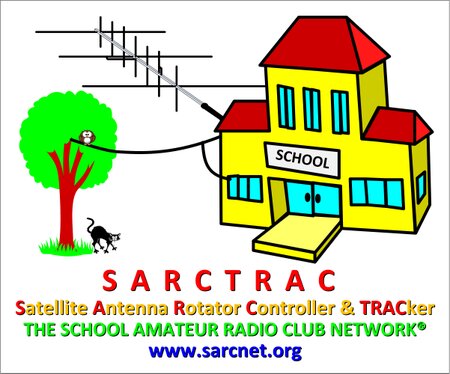


SARCTRAC Mk2 - Light Duty Satellite Antenna Rotator Controller and TRACker
SARCTRAC Mk2 was a portable, integrated, satellite tracking system, which was available as a fully assembled, tested and calibrated product. It used a more powerful Raspberry Pi 3B+ (requiring a large heat sink for the 5V regulator). It had its own WiFi web server and was controlled by a mobile device web browser.
SARCTRAC Mk2 - Discontinued:
SARCTRAC Mk2 is no longer available as a fully assembled, tested and calibrated product.
- SARCTRAC Mk2 Project - All about SARCTRAC Mk2
- SARCTRAC Mk2 Manual - Setup and Operate SARCTRAC Mk2 (54 Pages, 2.0MB, PDF)
- SARCTRAC Mk2 Quick Start Guide - Get going with SARCTRAC Mk2 (4 Pages, 520kB, PDF)
- SARCTRAC Mk2 3D Sensor Factory Calibration - See SARCTRAC Mk2 being calibrated
- SARCTRAC Production - See how SARCTRAC is made
- SARCTRAC Forum - Share your SARCTRAC Mk2 experience
- SARCTRAC Mk2 Video - See SARCTRAC Mk2 in operation


SARCTRAC Mk3 - Light Duty Satellite Antenna Rotator Controller and TRACker
SARCTRAC Mk3 was a portable, integrated, satellite tracking system, which was available as a fully assembled, tested and calibrated product. It used a pair of ESP8266s. It had its own WiFi access point and WiFi USB Dongle. It was controlled over this dedicated WiFi link by the user's own satellite tracking and rig control software.
SARCTRAC Mk3 - Discontinued:
- SARCTRAC Mk3 Project - All about SARCTRAC Mk3
- SARCTRAC Mk3 Manual (36 Pages, 2MB, PDF)
- SARCTRAC Mk3b Manual (38 Pages, 2MB, PDF)
- SARCTRAC Mk3 Quick Start Guide (2 Pages, 250kB, PDF)
- SARCTRAC Mk3b Quick Start Guide (250kB, PDF)
- GY-511 Acceptance Test (1 Page, 100kB, PDF)
SARCTRAC Mk3 is no longer available as a fully assembled, tested and calibrated product.
- SARCTRAC Mk3 Production - See how SARCTRAC is made
- SARCNET YouTube Channel - See videos of SARCTRAC working


SARCTRAC Mk4 - Heavy Duty Satellite Antenna Rotator Controller and TRACker
SARCTRAC Mk4 is our heavy-duty, integrated, satellite tracking system. This is a DIY project only. It will not be available as a kit or a fully-assembled product. The software will not be available. We publish the details here for those who wish to copy our design or seek inspiration for their own designs. It uses a pair of ESP8266s. It has its own WiFi access point and WiFi USB Dongle. It is controlled over this dedicated WiFi link by our own satellite tracking and rig control software.
For more details please see our SARCTRAC Mk4 Project Page:

SDR Receiver
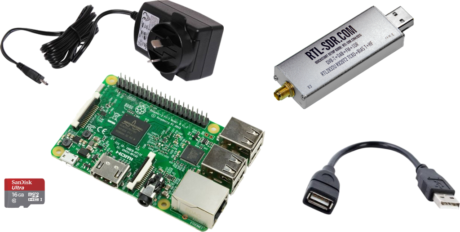
This project is a VHF/UHF Software Defined Radio. It demodulates AM, FM, LSB and USB signals. It has a frequency, mode and bandwidth control, an automatic gain control, squelch control and a waterfall display. The receiver runs on a Raspberry Pi 3 and uses an RTL-SDR DVB-T Dongle. Students can listen to the fascinating world of VHF/UHF communications.
For more details please see our SDR Receiver Project Page, GippsTech Presentation and GRC file:
SDR Transceiver

This project is a single-band HF Software Defined Radio Transceiver. It supports AM, FM, USB, LSB and digital modes (works with WSJT-X) each with selectable bandwidths. It has a squelch control, automatic gain control and a clarifier control. It provides a spectrum and waterfall display.
For more details please see our SDR Transceiver Project Page:
SDR Modulation Monitor

This project is a dedicated SDR receiver for monitoring VHF/UHF transmitter modulation using a narrowband waterfall display. The monitor runs on a Raspberry Pi 3 and uses an RTL-SDR DVB-T Dongle. Students can see their transmitter modulation characteristics on the 3.5" LCD display.
For more details please see our SDR Modulation Monitor Project Page, GippsTech Presentation and GRC file:
SDR AIS Receiver

This project lets SARC students track vessels coming into port. It is an Automatic Identification System (AIS) receiver. It picks up information about passing vessels and uploads it to an AIS server over the Internet. Students can check out pictures and information about the ships and costal receiving stations on a web site.
For more details please see our AIS Receiver Project Page, Amateur Radio Magazine Arcticle and GippsTech Presentation:
Portable Radio Terminal

This project is a self-contained, portable Amateur Radio station specifically designed for demonstrating Amateur Radio digital modes, receiving High Altitude Balloon telemetry and communicating via Amateur Radio satellites. It can be quickly setup outside in the playground, at a park or even on a mountain summit. It comprises a Yaesu FT-817 transceiver, a Raspberry Pi computer and a sunlight readable touchscreen display. Better still it can be powered from a small 25W solar panel. It can be used to demonstrate all our other projects.
For more details please see our Portable Radio Terminal Project Page:
Amateur Radio Direction Finding Telemetry Unit
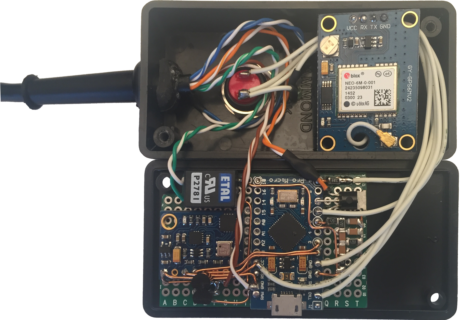
This project lets SARC students, while engaged in a simulated search and rescue missions, send their ARDF tracker bearings back to base camp using Amateur Radio digital communication mode BPSK31. The device sends the call sign, date, time, latitude, longitude, altitude, azimuth, elevation and checksum over an HF radio link. At the base camp, the fix is decoded on our Raspberry Pi Portable Amateur Radio Terminal using FLDIGI and bearing lines are plotted on a map using OpenStreetMap and OpenLayers.
For more details please see our ARDF Telemetry Unit Project Page and GippsTech Presentation:
Automatic Packet Reporting System on HF

This projects lets SARC students on outdoor missions report their GPS location using the APRS network. A commercial Terminal Node Controller and GPS Receiver are used to send the information over an HF radio link to the APRS Internet Service via a participating APRS IGATE station. Their location can be viewed using a web browser.
For more details please see our APRS Project Page and GippsTech Presentation:
Remote Radio Control Server

This project provides full access and control of an Amateur Radio transceiver from anywhere in the world over the Internet. It is used to participate in SARCNET sessions, at lunchtimes, while at work or overseas. A single Raspberry Pi computer provides a Voice over IP server for transmit and receive audio and a Web server to control the rig.
For more details please see our Remote Radio Control Server Project Page and GippsTech Presentation:
Robotics Platform SARCBOT
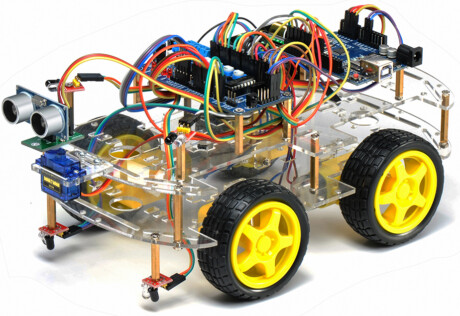
This project lets SARC students learn all about robotics while designing and building their own robots. SARCBOT1 is based on an inexpensive, 4WD, Arduino Car Kit, which we modify to become the universal power supply, drive and navigation platform for the student's own robotics projects. Arduinos are used for the all robot sensing and control subsystems. SARCBOT2 is based on an inexpensive tracked vehicle kit, to which we mount modular power, drive, controller and sensor subsystems. These robotics platforms are based on Arduino microcontrollers. Later a Raspberry Pi 3 will be added to correlate the sensor inputs and take overall control of the robot. It will also provide robot vision and WiFi command and telemetry capabilities.
For more details please see our SARCBOT Project Pages:
- SARCBOT1 Project Page - A 4WD wheeled robotics platform
- SARCBOT2 Project Page - A 2WD tracked robotics platform
USB Rig Interface
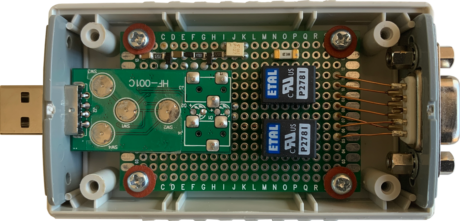
This project is a USB Audio and PTT interface for rigs, which don't directly support digital modes. Plug these interface devices into your Windows or Linux laptop or Raspbian Raspberry Pi and you can send and receive digital tones from your rig and automate the PTT control.
For more details please see our USB Rig Interface Project Page:
The Enigma Project
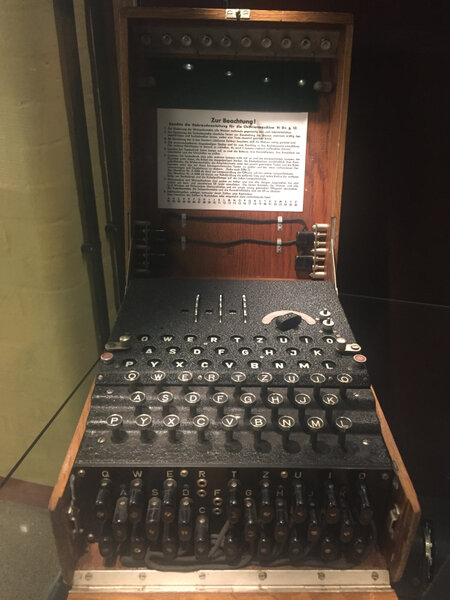
The Enigma Machine
This project is a begins with a software simulator of the infamous Enigma machine, as a proof of concept, and will be completed with a toy Enigma machine based on an Arduino microprocessor.
For more details please see our Enigma Project Page:
Loop Antenna
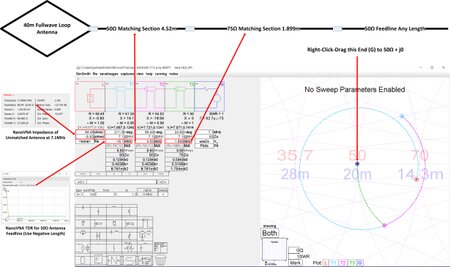
Loop Antenna
This project is a single band, 40m, full-wavelenth, horizontal, loop antenna. It details a novel design approach making tuning and matching the antenna easy using EzNEC, a Nano VNA and SimSmith.
For more details please see our Loop Antenna Project Page:
Inverted V Antenna
This project is a half wavelength, inverted V, fan dipole antenna for the 40m and 20m Amateur Radio bands.
For more details please see our Inverted V Antenna Project Page:
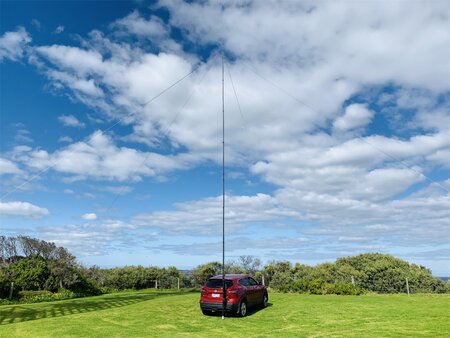
QSO Map
This project is a python program used to plot the location of QSOs (radio contacts) on Google Earth or other mapping applications.
For more details please see our QSO Map Project Page:

QSO Map
CTCSS Encoder
This is a simple Arduino project used to generate Continuous Tone Coded Squelch System (CTCSS) tones. This device can be retro-fitted to a VHF/UHF transceiver, which does not have CTCSS capability, in order to permit repeater access.
For more details please see our CTCSS Encoder Project Page:

CTCSS Encoder
HF Propagation
This project investigates a fascinating invisible phenomenon, powered entirely by the sun.
Propagation of shortwave radio signals locally and around the world is of great interest to Amateur Radio operators. It determines who can be contacted, where, when and on what frequencies. Signals propagate via ionised layers in the ionosphere, hundreds of kilometres above the Earth. The conditions change during the day and night due to the influence of the sun's radiation on the ionosphere. In this project we try to get a general understanding of what happens to the ionosphere over a 24-hour period.
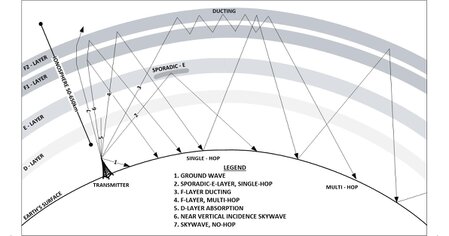
HF Propagation in the Ionosphere
GPS Time Sync
This project is a software application to synchronise your PC clock to the correct time using a GPS receiver. It is particularly useful when you have no Internet connection. It is essential if you want to run a weak signal digital communications application, like WSJT-8, on your PC when you are setup in a remote area, with no broadband coverage.
For more details see our GPS Time Sync Project Page:

GPS Time Sync Application
Feed Lines and Baluns
We are constantly experimenting with our antenna systems, so we thought we would publish some of our experiments.
For more details please see our Feed Lines and Baluns Page:

Current Projects
Home Automation System
A natural spin-off from all of our Raspberry Pi, Arduino and ESP8266 projects was the idea of building our own Home Automation System. We wanted to learn to use the best techniques to intelligently control and automate existing household appliances
For more details please see our Home Automation System Project Page:

Home Automation System

